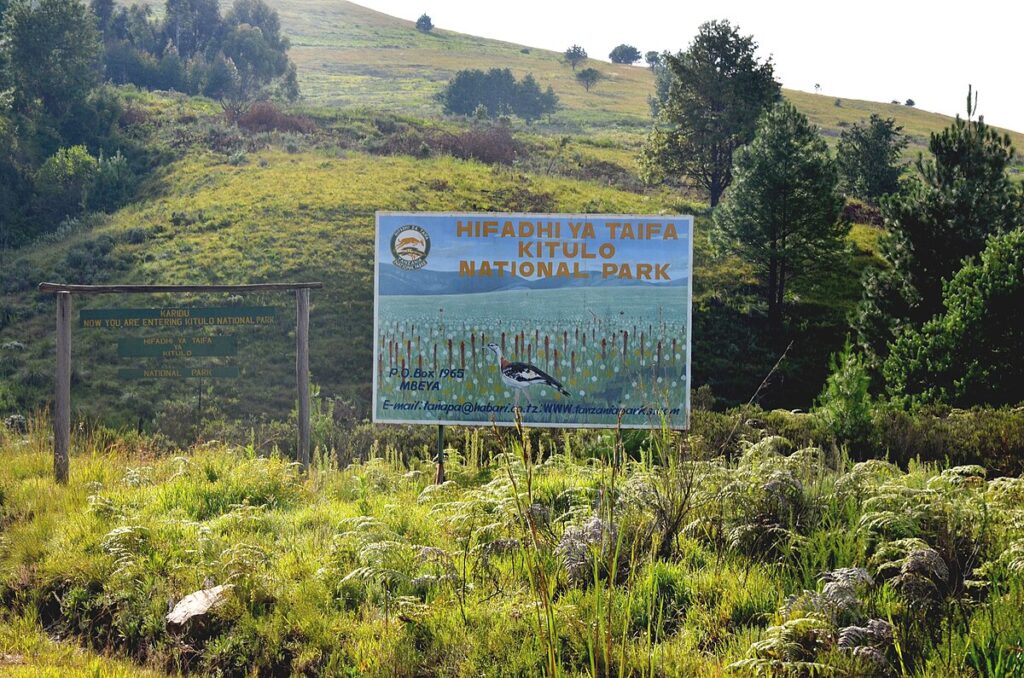Kitulo National Park, Tanzania
Kitulo National Park, Tanzania, the Kitulo Plateau is known as Bustani ya Mungu, meaning ‘The Garden of God,’ by the local populace, while botanists refer to it as the ‘Serengeti of Flowers’ due to its exceptional floral display. Kitulo is undoubtedly a rare botanical phenomenon, with up to 350 species of vascular plants, including 45 varieties of terrestrial orchids, which produce a spectacular wildflower display characterized by remarkable scale and diversity throughout the primary wet season from late November to April. Situated at an elevation of around 2,600 meters (8,500 feet) amidst the rugged peaks of the Livingstone, Kipengere, and Poroto Mountains, the well-irrigated volcanic soils of Kitulo National Park sustain the largest and most notable montane grasslands in Tanzania.
River Ruaha, particularly Kitulo, is distinguished for its botanical significance, featuring not only a plethora of orchids but also the striking yellow-orange red-hot poker and a variety of aster daisies, aloes, lilies, proteas, giant lobelias, and geraniums. including over 30 species endemic to southern Tanzania.
Large wildlife is rarely observed; however, a few mountain reedbuck and eland may be spotted traversing the wide grassland.
Kitulo, a botanist’s haven and a hiker’s paradise, is particularly appealing to birdwatchers. The sole population of the rare Denham’s bustard in Tanzania is located here, alongside a breeding colony of the dwindling blue swallow, as well as range-restricted species such as the Kipengere seedeater, mountain marsh warbler, and Njombe cisticola. This garden features numerous endemic species of lizards, butterflies, frogs, and chameleons, enhancing its biological diversity.

Size and location of Kitulo Plateau National Park
This national park encompasses an area of 412.9 square kilometers or 159 square miles, located in the southern region of Tanzania.
The temporary headquarters of the park located in Matamba are around 100 kilometers or 60 miles from the town of Mbeya.
How to get to Kitulo Plateau National Park
Access to the park is exclusively via a 4WD vehicle, utilizing a road that connects from Chimala, located 78 kilometers east of Mbeya along a paved main road to Dar es Salaam. Proceed south on the rugged yet remarkable dirt road, referred to as Hamsini na Saba due to its numerous narrow curves, until reaching the provisional park headquarters at Matamba. From this point, continue driving for an additional hour to reach the plateau.
Basic public transportation is also available.
Things to do at Kitulo Plateau National Park
There are remarkable hiking routes that will eventually be turned into a formal trail system.
Stroll across the expansive grasslands to observe avian species and wildflowers.
Ascension of the hills in the neighboring ranges. A half-day trek from the park to the Livingstone Mountains leads to the exquisite Matema Beach located on Lake Nyasa.
Best time to Kitulo Plateau National Park
Wildflower displays its peak from December to April, but the months from September to November are sunnier and more suitable for hiking, though less gratifying for botanists. From June to August, the weather is cold and foggy.
